Dark Souls 2 Review
I’ll be the first to admit that I am not a Dark Souls expert. I finished the first game once, put it down and never came back for more. So while this review is coming from someone who played the previous game, I was not familiar with its every intricacy and will freely admit the same with regards to the sequel. Like its predecessor, Dark Souls 2 is jam packed with secrets, hidden content and more character class variations and specializations than I could possibly have time to thoroughly explore for the purposes of a review. So you could say this review is coming from a spontaneous fan of the series, someone who enjoys the challenge and design but doesn’t take a completionist approach with it.
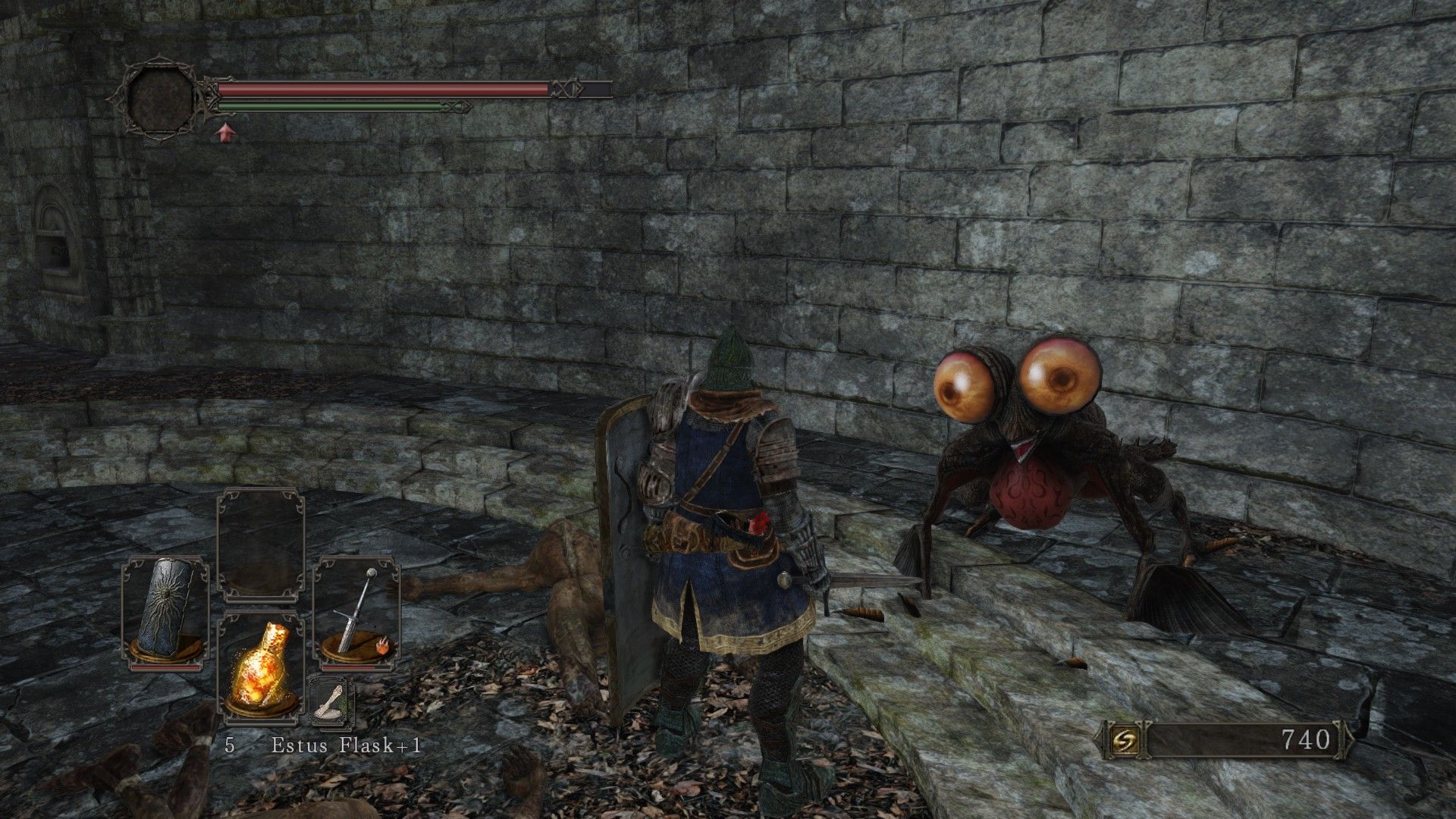
The annoying googley-eyed frogs make their grand return
As a sequel, Dark Souls 2 does a good job of taking the individual components that lead to the success of the original game and building on them, but it fails to create a world as cohesive and memorable as 2011’s Anor Londo. The high-risk, high reward system of souls, bonfires and challenging encounters does make it over intact, and despite a few problems, the formula is as potent as ever. Creeping into a new territory for the first time is exciting and terrifying as brightly glowing items lure you off the main path into treacherous side rooms bristling with hidden dangers. You will still make difficult decisions about pressing on into new territory with a large collection of souls in hopes of finding a new bonfire against retreating to your last bonfire in order to rest and level up. It is the way in which the individual levels are cobbled together that Dark Souls 2 loses some of the wonder that made the original so enthralling.
Even though Dark Souls was pretty cryptic in the story telling department, I generally had some idea of what I had to do and where I had to go to progress the main story. If you asked me to explain the plot I would be pretty clueless, but the experience had some momentum and direction which greatly helped motivate you to push on. The sequel is far less focused in this regard. You are given incredibly vague instructions about your first four-part objective, which will end up taking such a long time to complete that you will likely just start looking for new areas and open doors. Several different areas are made accessible almost from the start, and figuring out where you need to go is left totally unexplained. I largely found myself going with the path of least resistance as I worked my way through the first and main part of the game. Things do become a bit more focused later on, but it’s too little too late.
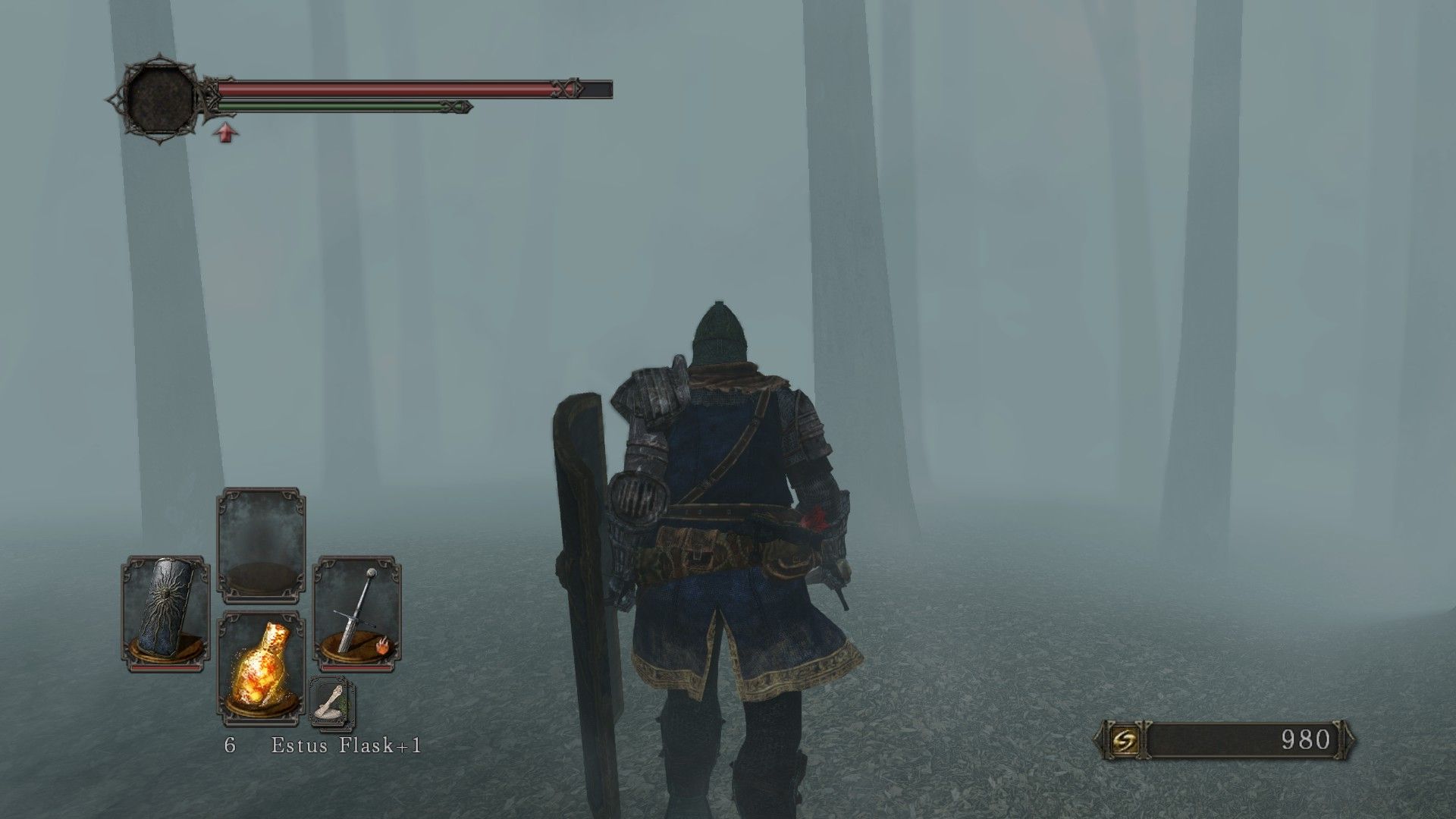
Exploring a foggy forest is a tense highlight
The world itself is built around a central hub area called Majula, and you must return here to level up and reinforce weapons and armour. The first few areas you explore from here seem to fit together nicely, but as you venture out the geography of the world starts making less and less sense. Areas are mashed together in odd ways; you might take a elevator up into an area that feels like it should be deep underground, or walk through a door in the upper levels of a castle to find yourself in a huge water filled cavern. At times it feels like the areas were designed separately and then mashed together without a lot of thought. In order to facilitate this new world design, you can fast travel between bonfires right from the start of the game. This serves only to further confirm how fractured the world is compared to Anor Lando, where everything felt interconnected with clever shortcuts leading you back to previously visited areas.
As a veteran of the original game it is difficult to say if the sequel is more accessible since I am already familiar with the core mechanics and design philosophy. The tutorial is more robust, and it takes a while longer to get to your first boss fight. This does serve to make the first two or so hours more manageable, assuming you don’t wander into the wrong zone after completing the tutorial area. On the flip side, crucial information is still left unexplained, like how to level up and how to reinforce armor and weapons. I still had to look up a few things online, but probably less than in the first game. If you haven’t played a Souls game before and want to know if the sequel makes for a better starting point than the original, the answer is probably yes, but there will still be a learning curve longer and steeper than in most games.
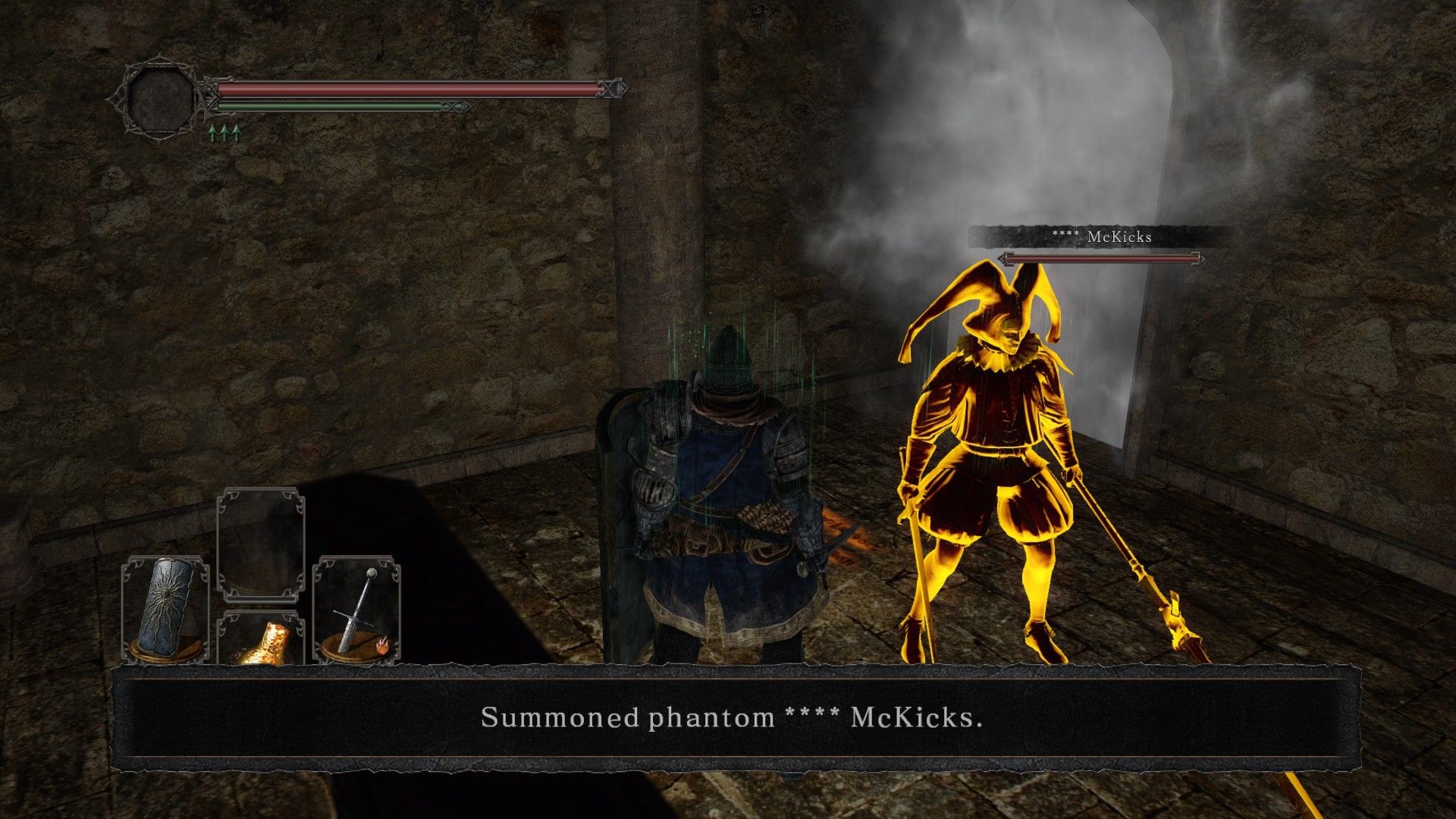
Summoning another player is the perfect cure for rattled nerves
The Souls series has built its reputation around difficulty, and the sequel certainly lives up to this, but it doesn’t always achieve difficulty in the right ways. The best levels feature enemies offering up interesting blends of offensive and defensive attacks, forcing you to act carefully and think about each encounter before jumping in. One highlight level early on has melee enemies throwing pots of oil onto the player while strategically positioned archers fire flaming arrows at you. If you get hit by an oil pot and then a flaming arrow, you burst into flames. This makes for tense and challenging encounters that heighten the experience of exploring new territory. This caliber of enemy and level design is sadly rare in Dark Souls 2.
In order to achieve the difficulty that is synonymous with the series, many levels instead opt to rely on thin-spread bonfires and cheap enemy placement to create a challenge. Ambushes, traps, NPC invasions and illusory walls feel like ham-fisted ways of killing you a few times before making it to the next bonfire. You expect this sort of stuff from a Souls game, but its relied on much more heavily here and starts to wear thin after a while. There are also a few pretty extreme difficulty spikes throughout the game. One of these comes a few hours in, where you must fight a series of giant stone knights. Another area later on forces you to go quite a distance through a large number of enemies and then fight one of the hardest bosses in the game just to get to the next bonfire. Dark Souls 2 becomes a bit of a grind in these instances, but there is one change to the formula that eases the pain a bit. After you kill enemies a dozen or so times, they stop respawning when you rest at a bonfire. As a result you won’t have to keep fighting them, but it also means you can’t farm them for souls in order to level up.
The infamous boss fights are another component that don’t compare favourably with the previous game, with most bosses lacking the creativity and menace. There are seemingly endless iterations of the lumbering big dude wearing armor, who generally make for an easy fight once you take a minute to learn the attack patterns. There are a few challenging bosses, but they often rely on forcing you to fight multiple people/beasts at once instead of creating a single boss with unpredictable attacks. There is nothing here as edge-of-your seat exciting as Ornstein and Smough or as visually imposing as the Gape Dragon. I found myself getting through about half of the boss fights on my first or second try, and by later in the game the knot of dread I used to feel when entering a fog door had turned to passive curiosity.
Fortunately the gameplay itself remains strong enough to make up for most of these deficiencies. Combat feels weighty and precise, while improved lighting and sound effects make spells an enjoyable option if you don’t mind kiting your enemies. There are a few changes to the formula that help differentiate the moment to moment gameplay from the previous Souls entry; every time you die when hollow, you lose a bit of health. You can also be invaded while hollow, so the game is clearly pushing you to remain human as much as possible even though human effigies, the new humanity-restoring item, are quite limited in supply. Building an effective character through careful choice of equipment and use of souls is immensely satisfying, especially when you return to a previously troublesome area and go through it with relative ease.
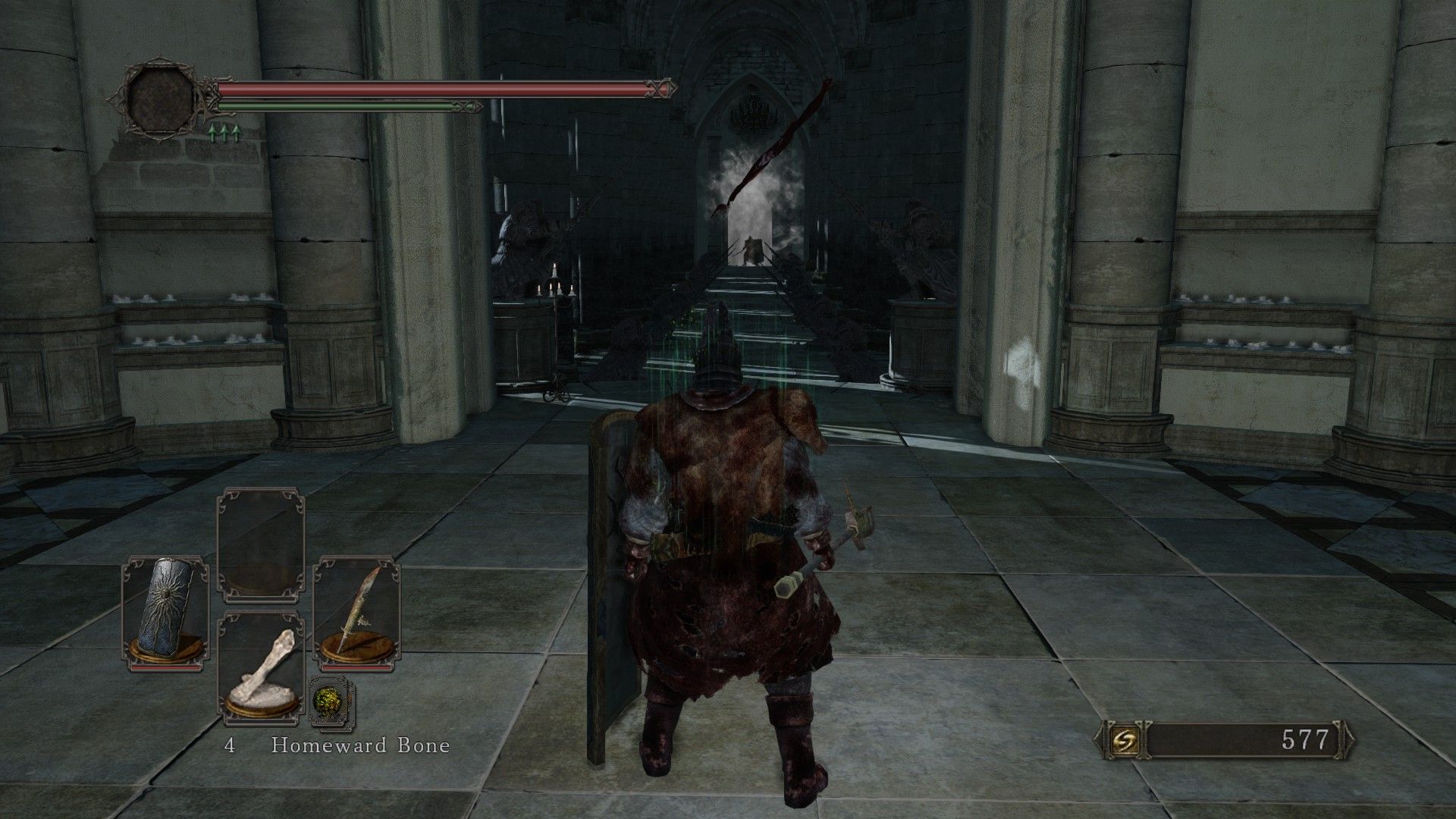
Getting to a boss fight is often harder than the fight itself
There are still a few rough patches in the gameplay that take you out of the experience. Most objects have geometry that extends past their visual edge, so shooting arrows through a door or near a wall will often see them getting stuck in what appears to be open space. Enemy AI can be quite buggy; they will sometimes run into walls and get stuck, and can often be baited into falling off cliffs or into holes so you don’t have to really fight them. There are a few improvements as well however; while the jump controls remain cumbersome and unwieldy, there is way less of the janky platforming that was such a pain in the first Dark Souls. Boss arenas also tend to be a bit bigger, so you won’t have to fight the camera as much as in some of the more claustrophobic fights of Dark Souls 1. The camera and lock on system can still be a bit finicky, but it feels improved overall.
The multiplayer aspects of Dark Souls 2 have been fleshed out significantly. Covenants are much more prominent here and have a large impact on the gameplay, with most relating to multiplayer in one way or another. One covenant encourages members to defend a bell in a certain area, meaning non covenant members who venture in will be constantly invaded. Other covenants grant members glowing summon signs or allow them to drag other players into their game for a sort of reverse invasion. Summoning others to help with a tough boss fight, or helping others take down a boss they are struggling with, grants a good source of camaraderie and helps you feel a bit less alone. Successfully helping another player defeat a boss will restore your humanity, creating concrete incentive to help your fellow players. The whole system of players leaving messages on the ground remains intact, along with other players’ bloodstains which showcase their deaths, leading to very helpful and darkly humorous moments throughout the game.
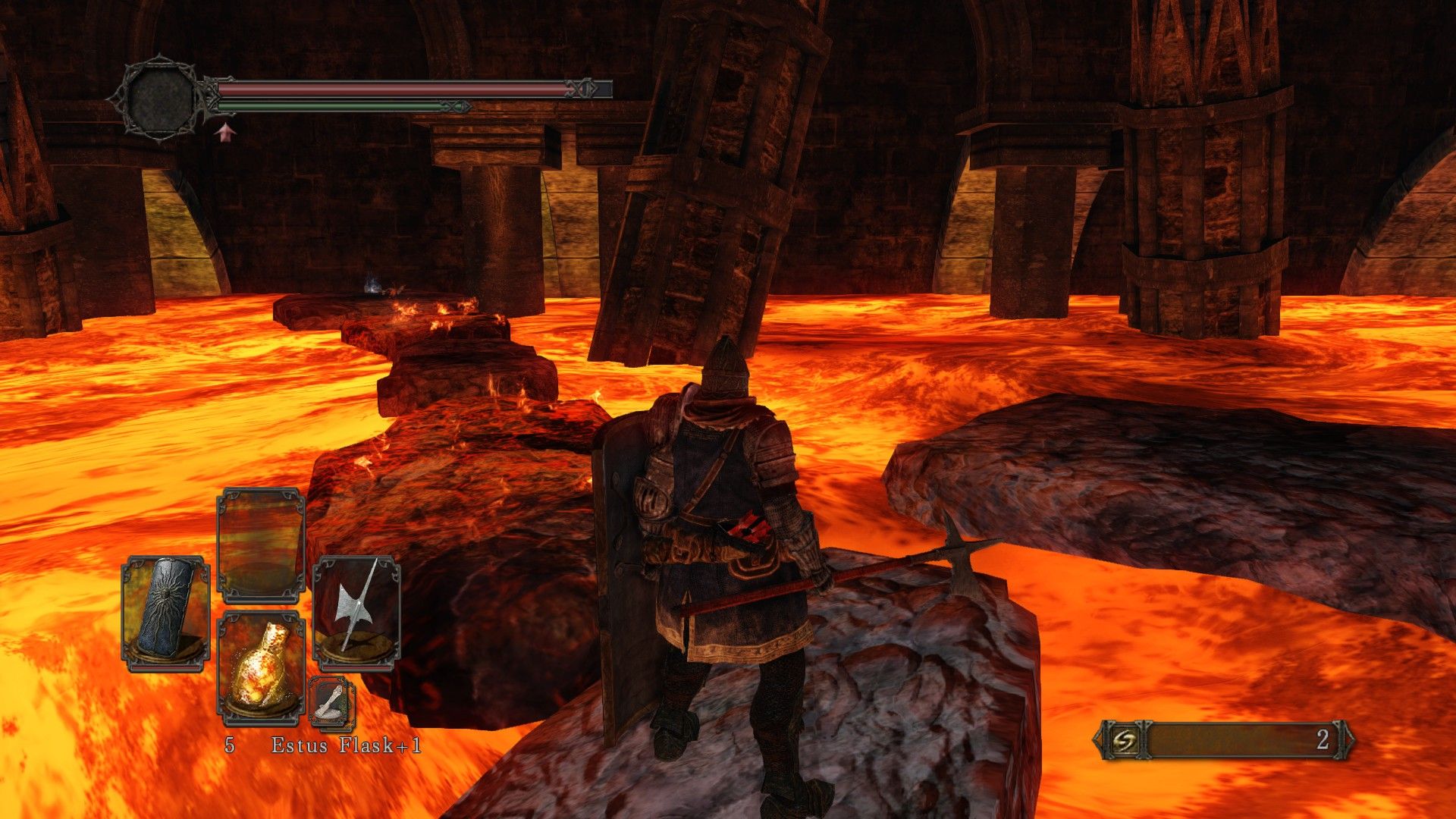
Going after every item is a good way to get into terrible situations
Dark Souls 1 on the PC was a terrible mess of a port, and I am happy to say that the sequel is much better in this regard. You will no longer be forced to play at 720p/30fps without mods, and the options menu is far more comprehensive. The game also seems to be very well optimized; I never experienced a single frame rate drop or crash with the settings turned all the way up. Keyboard controls have been improved, but are still not great due to jerky camera movement and odd button assignments. Rebinding the keys and tinkering with mouse sensitivity helps make it playable, but using a controller remains the best way to go.
The visuals themselves are slightly improved over the first Dark Souls, but still fall behind industry leaders considerably. Textures are generally sharp and character models are mostly quite detailed, but the lighting is very inconsistent. Some areas are vibrantly lit, while others look very flat and uninteresting. One of the first items you find in the game is a torch, which can be used to light various objects within the environment. This helps to liven things up a bit, although you will quickly find that using the torch has significant drawbacks compared to using a shield or duel wielding weapons. The audio quality remains high, with weapons sounding meaty and environmental sounds being crisp and detailed. Music is used minimally, being relegated to boss fights and the discovery of new areas, although it works well at these times.
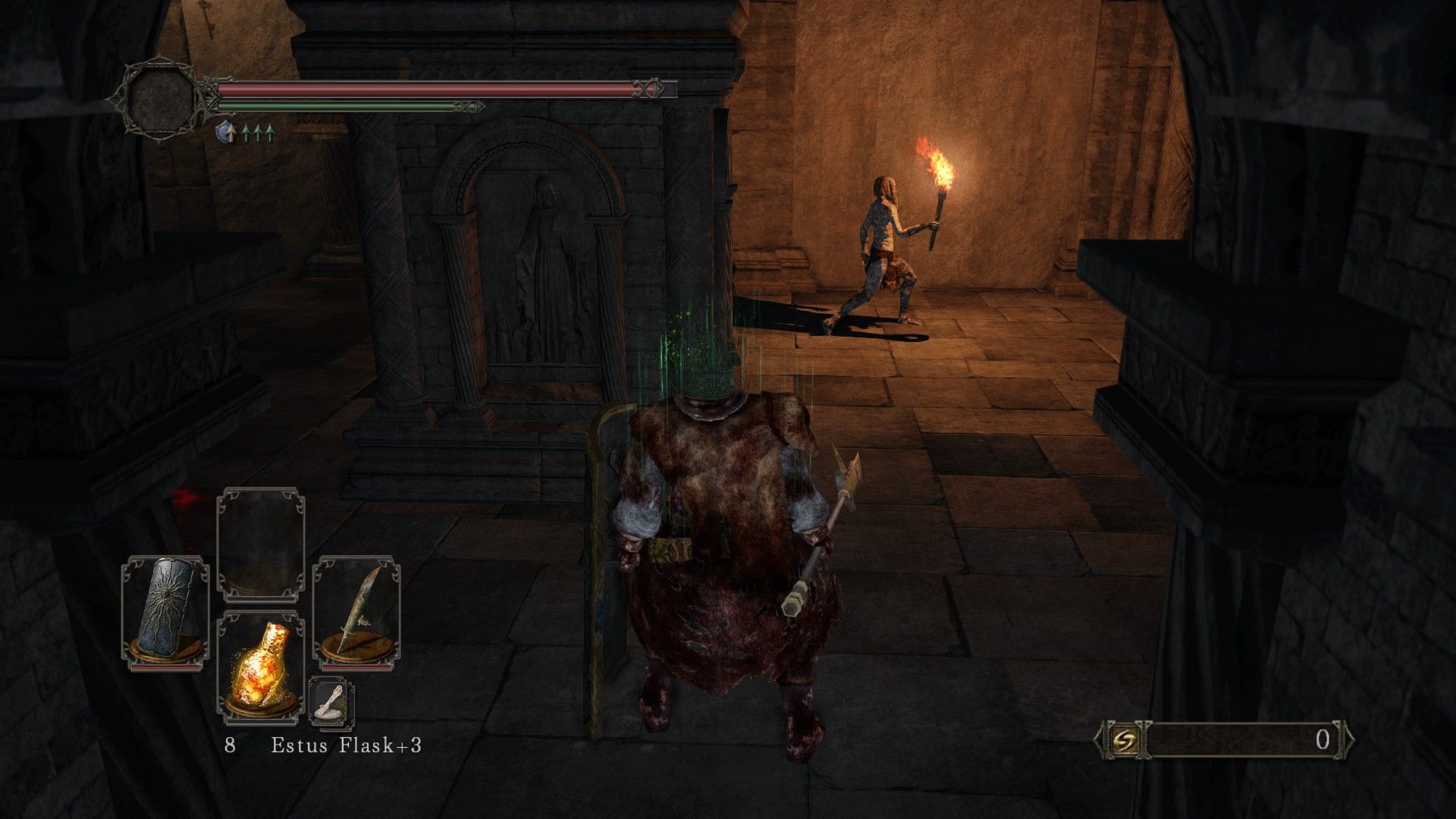
Torches add some life to the game’s often drab lighting
I felt the first Dark Souls on the PC to be a diamond in the rough; an artistically made RPG with some miserable platforming, a few poorly designed boss fights and serious technical issues. The sequel is no longer rough, but I don’t think it’s a diamond either. Dark Souls 2 successfully mimics the design of the original while fixing a few problems, but also fails to capture the heart of the first game. It’s a big, deep, challenging action RPG that will consume inordinate amounts of your time, but you won’t feel quite as satisfied walking away from it as you did after finishing the original game for the first time. Fans of the series should absolutely pick this game up, but if you didn’t fall in love with the first Dark Souls after giving it a fair try, this sequel will not change your mind.
